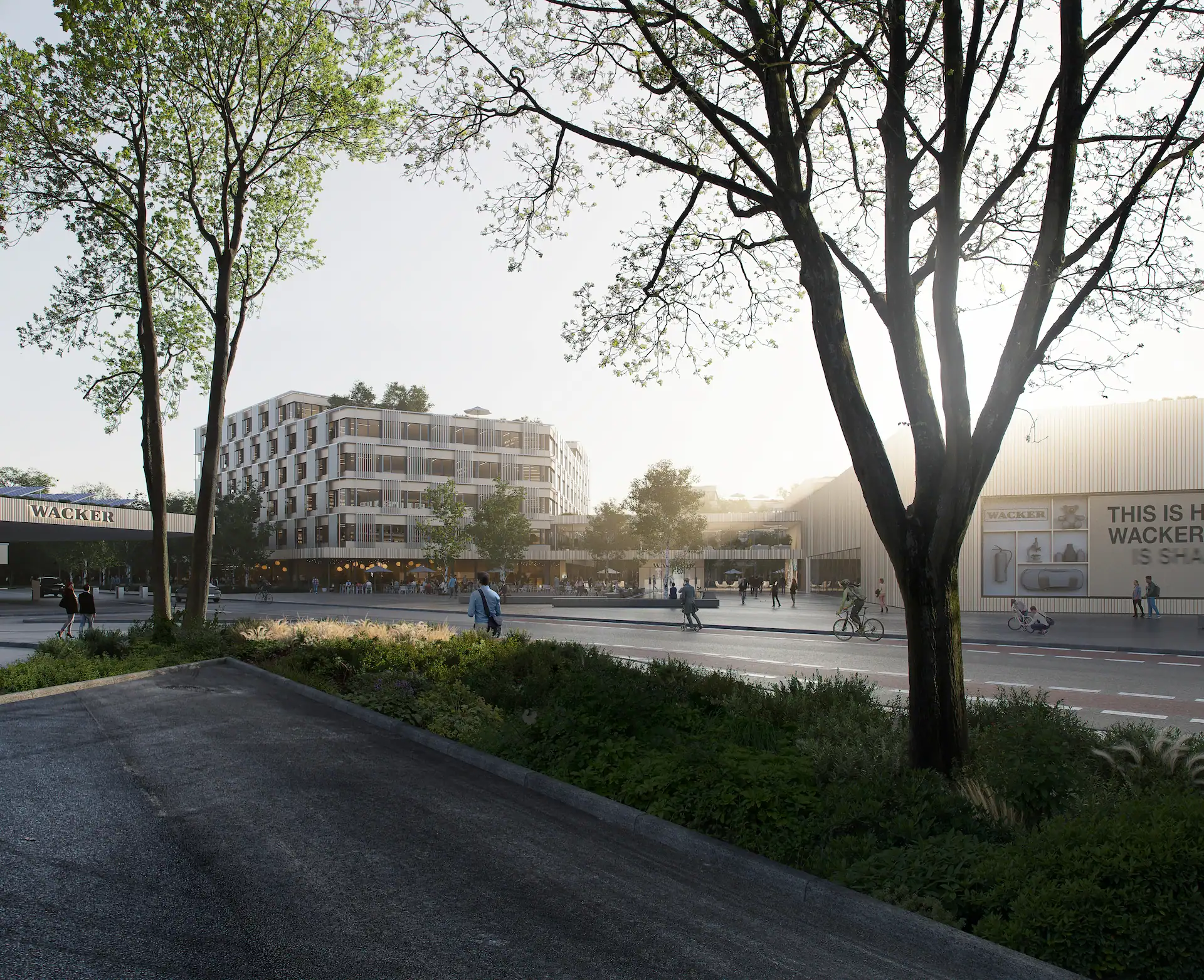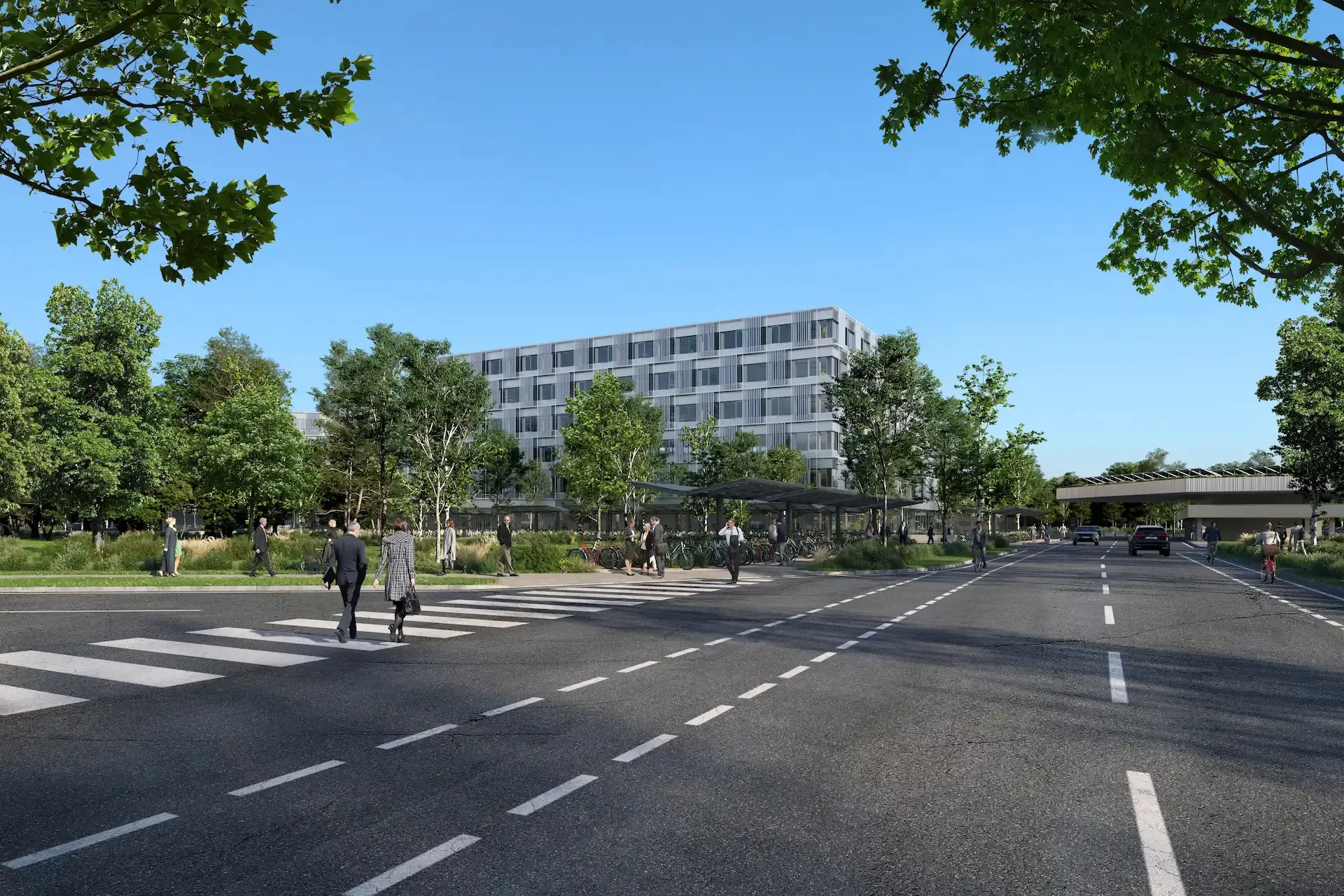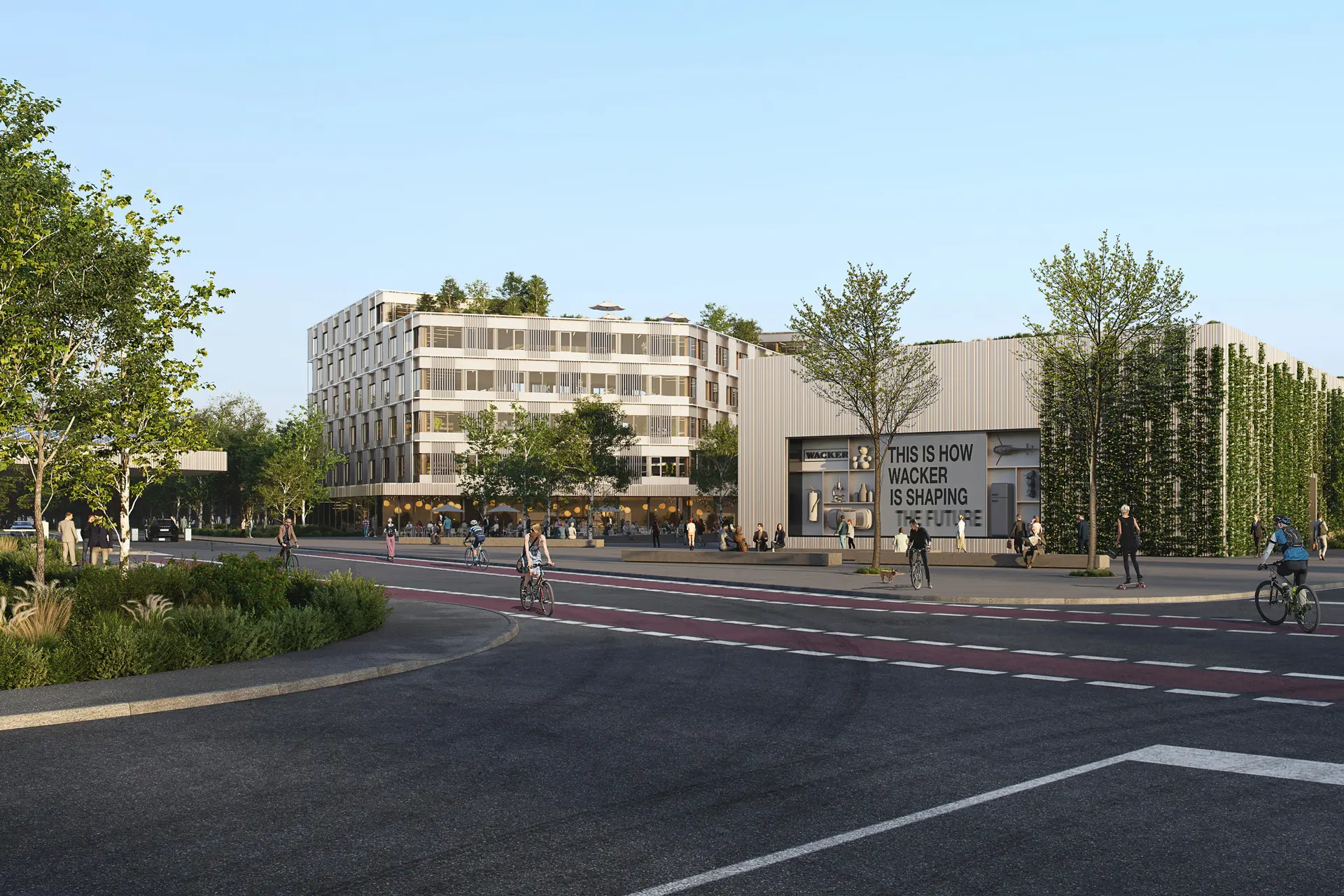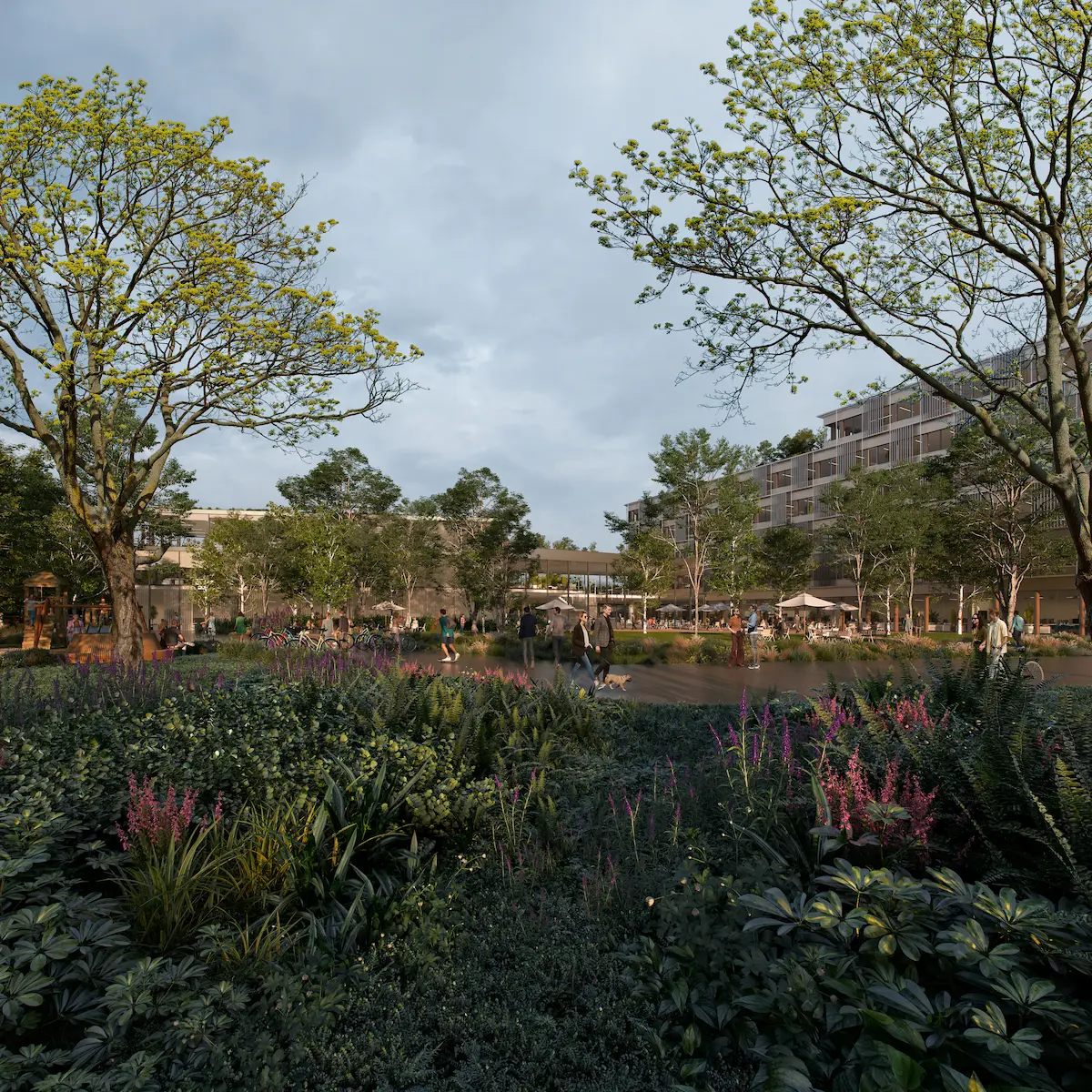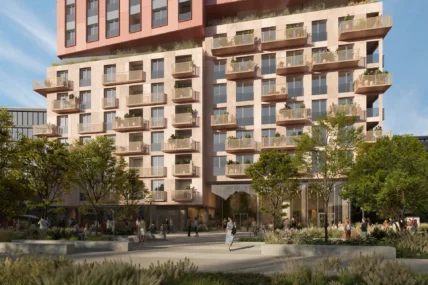Wacker Campus
German Wacker Campus Competition Tests Animation-First Workflow
Defining visual expectations
Our first email from JLL Germany arrived on a Thursday morning in December. For our team at ZOA—trusted by ZAR Holdings, Zaha Hadid Architects, and Gensler—it was something unexpected: a major German corporate client operating more like a startup than a multinational real estate giant. What followed challenged every assumption we held about corporate collaboration and revealed the creative potential hidden within rigid constraints.
The Wacker Campus story began in 2019 with a design competition, but by 2022, Wacker had re-evaluated its strategy and finally commissioned JLL to take over the architecture, project development, and execution—ultimately replacing the original competition design.
Our first project with JLL was communicating their completely reimagined vision for the same site. Despite being a global giant, they operated with direct communication, quick decisions, and no bureaucratic layers. They adapted to our workflow rather than imposing rigid processes. JLL had transformed from advisor to architect, taking full responsibility for design outcomes.
The Wacker Campus in Burghausen became more than an architectural visualization project; this 400-workstation complex, featuring timber-hybrid construction that reduces embodied CO₂ by 55%, demonstrated how environmental ambition and collaborative processes can align to create something meaningful in architecture.
When constraints became catalysts
The competition brief imposed severe limitations—draconian constraints: every competing architect had to present from identical camera angles, eliminating the dramatic perspectives that typically differentiate photorealistic architectural imagery.
Every architect had to show the building from the same viewpoints. The jury wanted objective comparison—side-by-side renderings and CGI from identical perspectives. This forced us to focus on lighting, atmosphere, storytelling details, and to try multiple sketch variations, exploring different approaches. We tested different times of day and seasonal scenarios, populating scenes with carefully chosen activities that brought life to otherwise potentially sterile compositions.
Our reverse workflow emerged from these constraints: animation first, then stills three months later. By the time we created the final architectural renderings, the model was complete and stable, allowing us to focus entirely on composition and mood within the predetermined parameters.
In the early phase, the animation took priority, covering different areas—mostly the interior spaces of the campus. The still images later showcased the exterior and how people would experience the building while cycling or walking past it. These two competition deliverables complemented each other, containing different aspects and showcasing distinct areas of the project, each serving different goals and communicating specific design intentions.
The essence of successful renderings
This project summarized what we’ve learned over twenty years: successful architectural visualization isn’t about flashy imagery—it’s about understanding what your client actually needs and building trust through delivery.
The competition’s standardized viewpoints taught us that when you can’t rely on spectacular angles, you discover the project’s true character through materials, light, and human interaction.
The Wacker Campus animation and renders succeeded because they honestly communicated how this sustainable workplace would feel to inhabit. Sometimes the most restrictive brief produces the most revelatory process.
